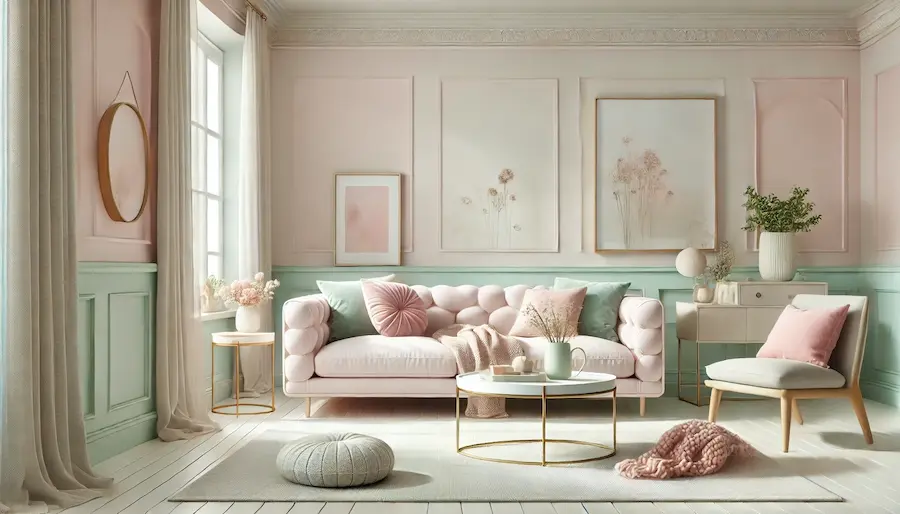Designing a pastel living room involves incorporating soft, muted colors to create a serene and inviting atmosphere. Pastel shades, such as blush pink, mint green, soft lavender, and light blue, can transform a space into a tranquil retreat that exudes elegance and charm.
History and Origins of Pastel Interior Design
Pastel colors have been utilized in interior design for centuries, often associated with the Rococo period of the 18th century, which emphasized lightness, elegance, and an abundance of pastel hues. In contemporary design, pastels are appreciated for their ability to soften spaces and introduce a calming effect, making them a popular choice for living areas seeking a gentle and sophisticated aesthetic.
Key Features of a Pastel Living Room
- Color Palette: Incorporate a harmonious blend of pastel shades to establish a cohesive and soothing environment. For instance, pairing soft pink walls with mint green accents can create a balanced and refreshing look.
- Furniture: Select furniture pieces in neutral tones or pastel upholstery to maintain the gentle color scheme. A blush pink sofa or a mint green armchair can serve as focal points while enhancing the room’s tranquil ambiance.
- Accessories and Decor: Incorporate pastel-colored cushions, rugs, and artwork to add layers of softness and visual interest. Floral patterns and geometric designs in pastel hues can introduce subtle complexity without overwhelming the space.
- Lighting: Utilize natural light to amplify the airy feel of pastel colors. Sheer curtains in light shades can diffuse sunlight, creating a warm and inviting glow throughout the room.
Applications of Pastel Design in Living Rooms
- Walls: Painting walls in pastel shades can set a serene backdrop for the entire room. Soft pink or light blue walls, for example, can evoke calmness and openness.
- Accent Pieces: Introducing pastel-colored decor items, such as vases, lamps, or picture frames, can subtly infuse color without dominating the space. These accents can be easily updated to refresh the room’s look over time.
- Textiles: Incorporate pastel-hued textiles like throw blankets, area rugs, and curtains to add warmth and comfort. Layering different textures in pastel colors can enhance the room’s depth and coziness.
Considerations When Designing a Pastel Living Room
- Balance: Ensure a balanced distribution of pastel colors to prevent the space from appearing overly saccharine. Combining pastels with neutral tones, such as whites or grays, can create a sophisticated and harmonious look.
- Contrast: Introduce contrasting elements, like darker furniture or bold accessories, to add dimension and prevent the room from feeling too monochromatic. This contrast can highlight the softness of the pastel hues.
- Personal Style: Incorporate personal touches and decor that reflect your individual style to make the space uniquely yours. Family heirlooms or travel souvenirs in pastel shades can add sentimental value and character to the room.
Conclusion
A pastel living room offers a tranquil and elegant space that combines historical charm with contemporary comfort. By thoughtfully selecting pastel hues and balancing them with neutral tones and personal accents, you can create a living area that is both inviting and reflective of your unique style.
